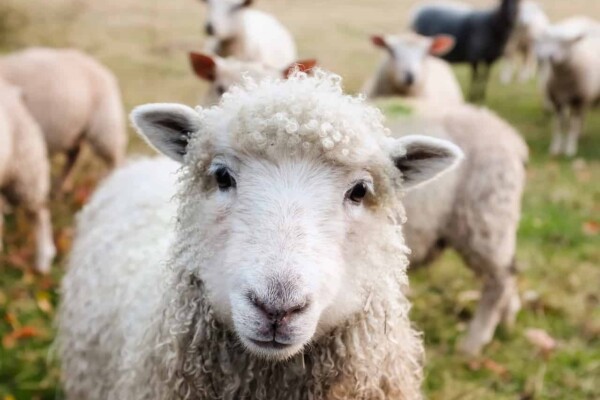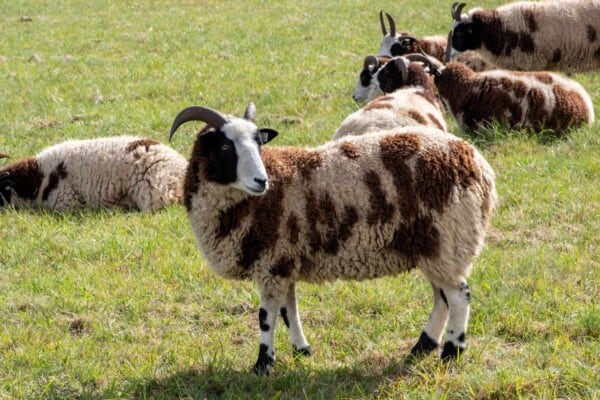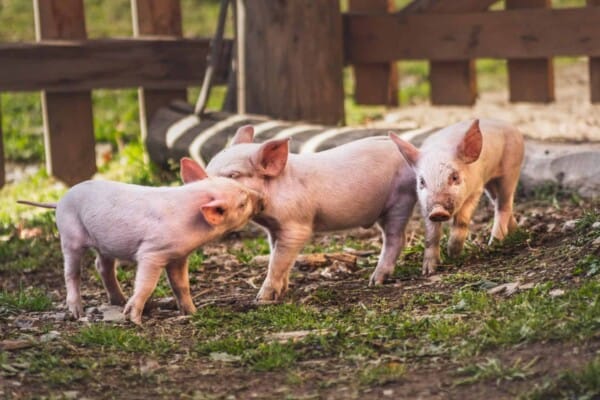The 1960s is commonly referred to as the golden era for purebred cattle breeding in the US, and for good reason too.
During this time period, a very large number of cow breeds were recorded in breed registries and they were all documented to the point where we know exactly what was used to create what.
Next up came the 70s and the 80s, during which the European Cattle or exotics were added to the mix and brought to the purebred breeders.
This is when a lot of money was poured into creating elaborated facilities which produced high quality cattle unlike anything we’d ever seen before.
The cattle that were produced around this time period all had funny names and they all came in all sorts of different shapes and sizes. This was a sign of their times, as the cattle industry was experimenting with what could be done and what should be done more than ever before.
This is also the period during which breeds such as the Simmental, the Limousin, the Gelbvieh and the Chianina gained a lot of traction in the US.
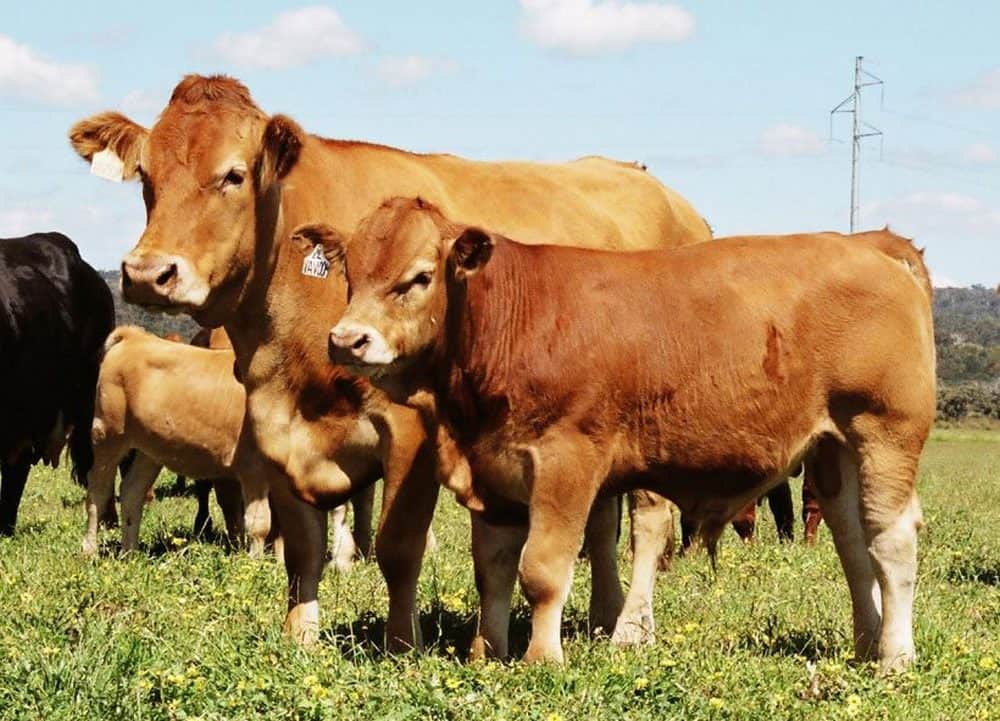
Nowadays, the beef industry is believed to have entered into an era of biotechnology, as we have a much clearer understanding of which path we should take with our crossbreeding practices.
The increased competition on the open market has also led to the production of more efficient and productive animals, which is why a lot of those older breeds fell into obscurity by now.
Luckily, there is one breed that is still actively sought after even to this day, and that is the aforementioned Gelbvieh cow breed.
It is the go-to option for a lot of people that want to capitalize on these traditional cows. But, if you want to actually get your hands on one, there are more than a handful of things you should know beforehand. These things include:
Gelbvieh Cattle: Origins and History

The Gelbvieh breed is known for coming from Bavaria, Germany, around the early 1800s. It was one of the best triple-purpose breeds on the market back in the day.
Being a large animal, it shouldn’t come off as a surprise that it was a fan-favorite choice for its meat production. At the same time, it was and still is capable of producing a lot of milk, which makes it a great option all-around to invest into.
At the same time, thanks to its large size, the Gelbvieh cow breed was also a very popular draught animal to have around your farm, hence the triple-purpose tagline.
It is believed to have been the product of several local strains of the Red-Yellow Francovian cows at the time.
The name “Gelbvieh” is also interesting, as it translates directly into “yellow cattle”, which is a reference to its heritage.

In order to make sure that this breed’s unique traits wouldn’t be lost to the passage of time, a breed society was established in Germany around the year 1899.
In the year 1976, the semen of one such Gelbvieh bull was sent over to Australia, where the breeders hoped to put it to good use.
Sadly, it took them up until 1979 to actually put their plan into action. This took place in Queensland, and from that sperm came a whole slew of Gelbvieh cows that changed the cattle market as we know it even to this day.
In 1989, as many as 7,000 different animals had been registered in the breed society, which is a testament to the breed’s popularity at the time.
Interestingly enough though, the very first purebred, graded-up Gelbvieh cow is believed to have been recorded in the year 1991 by the Norolle Cattle Company, Millmerran, Queensland.
After seeing the potential of this breed, the breeders at the time requested a wide range of Gelbvieh live animals, semen and embryos in order to take full advantage of it.
Gelbvieh Cattle Characteristics

The typical Gelbvieh cow is known for being medium-sized, maternal and very strong despite not being the largest breed out there.
These cows tend to have short coats which can be anything from black to honey colored as far as the base color is concerned.
Most bulls can weigh in at around 1,000kg or 2,200lbs each, while the cows on the other end tend to weigh in at around 750kg or 1600lbs each.
When they’re born, the calves tend to weigh in at around 37.5kg or 80lbs, although in some cases they can vary.
While back in the day, the Gelbvieh breed was known for being horned, there has been a proclivity towards polled animals as of late, which is why this trait has been bred out of the standard cow.
Still, if you’re looking for a horned Gelbvieh cow you should still be able to get one if you search hard enough for it.
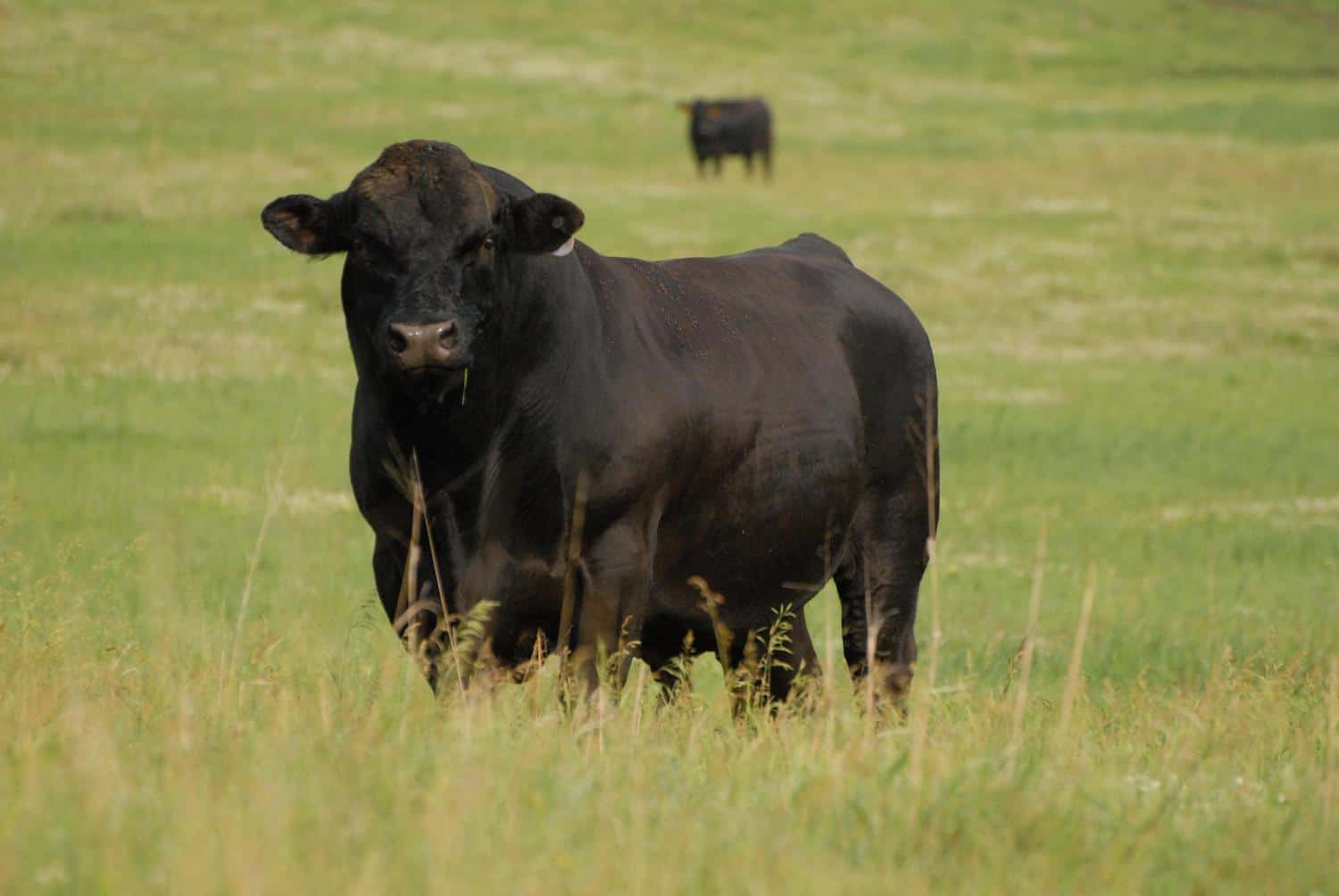
But for the most part you can expect most Gelbvieh cows to be polled, since the great majority of Gelbvieh breeders around Australia and North America have specifically selected polled gene carriers to do the breeding for them.
Another key characteristic of the Gelbvieh cow breed that we will argue for until our final breath is the fact that these cows are exceptionally docile.
They are known for having a very quiet temperament, almost to a fault. They are very gentle creatures that will avoid trouble at all costs.
This in itself makes them very easy to handle, as even under extreme pressure they tend to live their lives stress-free.
At the same time, the fact that they are so calm works out in their favor as it means that even during transportation and prior to the butchering they will remain calm, which will keep their carcasses from hardening up.
Last but not least we should mention how their full skin pigmentation makes them capable to adapt to hot environments with ease.
For example, a few Gelbvieh cattle were sent over to South Africa, where they had reportedly adapted to both the blazing heat and the constant ticks. This is a testament to the breed’s overall hardiness.
The Early Puberty of the Gelbvieh Cow Breed
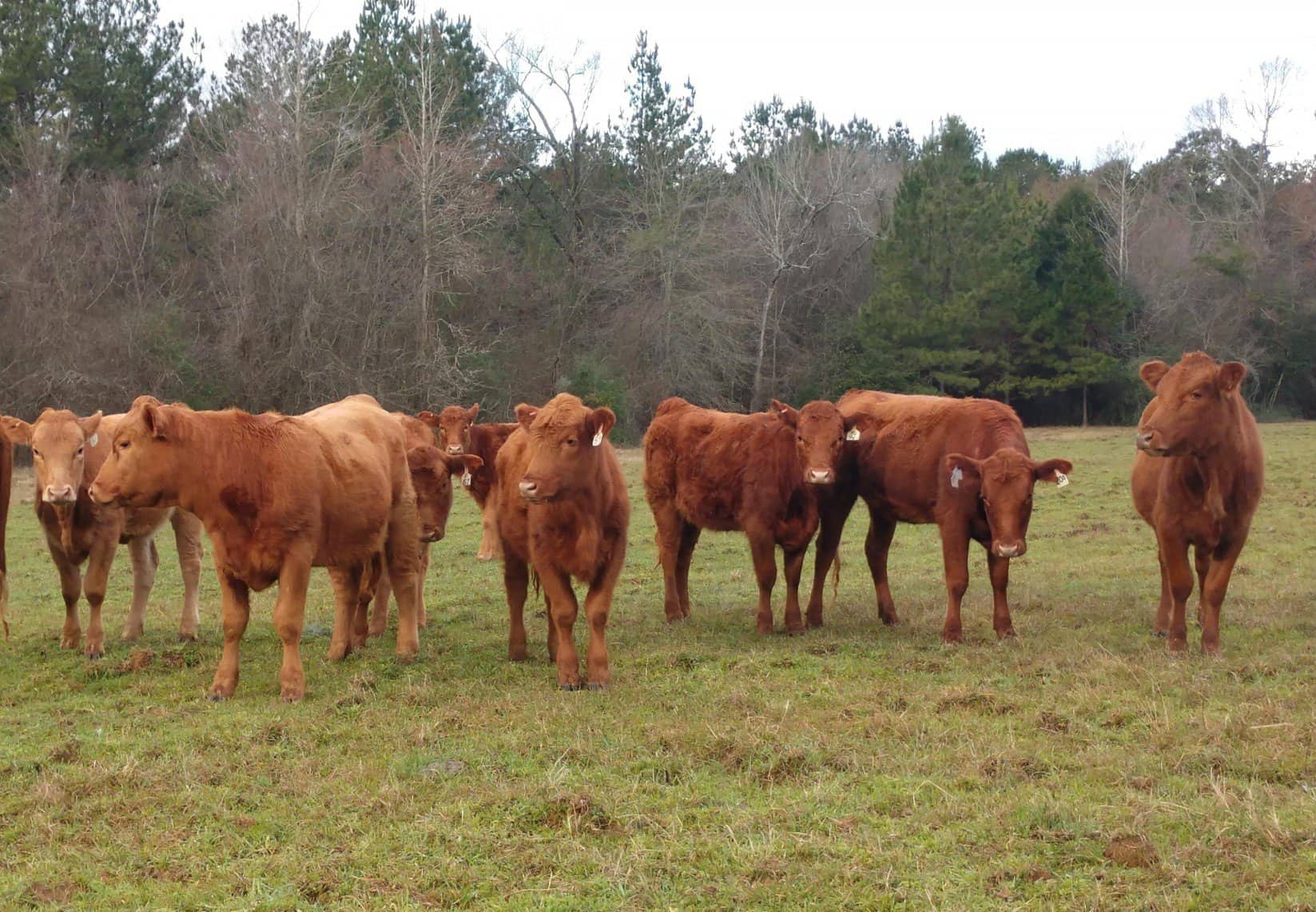
Back in the 70s, the Meat Animal Research Center at Clay Center, Nebraska, USA begun a comparative testing between the most popular breeds at the time.
So, for the next decade or so, they tested out everything there was to these breeds, comparing them with one another to officially establish which of them was the superior choice for the average farmer.
Through this, they discovered the fact that the Gelbvieh scored highly in terms of maternal traits as well as in the “weaning weight per cow exposed to breeding” category.
They also discovered the fact that the Gelbvieh breed has the earliest puberty of any other beef breed at the time outside of the Jersey cow breed.
So, you can expect your Gelbvieh cow to be joined at 12 months and for her to calve at 21 months, which is a lot earlier than the average 24 months.
All of this together makes the first-calf Gelbvieh heifer 15 months before it can calve again as a 3-year-old.
This in itself is a huge advantage for the Gelbvieh heifers, as they can continue to grow while they feed their calves, and as soon as their body is healed, they’re all ready to have another pregnancy.
The calves themselves are on the smaller side of the spectrum, but keep in mind that they will also grow fairly quickly as long as they have access to their dams’ milk.
Gelbvieh Cows: Fertility and Leanness

The Gelbvieh cow breed is known for being highly fertile, with most of them being capable of producing high weaning units of over 200kg in 7 months or so. Their yearling rates are also up there, with them being usually higher than 300kg per average.
As far as their meat is concerned, you should know that the Gelbvieh beef is known for its overall leanness.
Of all of the breeds that were studied by the Meat Animal Research Center, the Gelbvieh had the largest rib eye muscle area per 100kg. As such, you can expect them to have a high cutout yield for sure.
Because of this and more, Gelbvieh cows are primarily used in cross-breeding programs in order to further enhance maternal performances, weaner marketability and of course, carcass quality.
Back in the year 2000, a study was conducted by the Composite Cattle Breeders Association of America, during which they tested out breeding plans for composite cattle.
They had a total of 100 different participants take place in ten breeding programs at the time, out of which eight used Gelbvieh as their European component.
Because of this and more, the Gelbvieh cow breed has been widely regarded as the “Continental breed of Choice” by the association.
The Main Selling Points of the Gelbvieh Cow Breed

If you are looking to get your hands on a Gelbvieh cow, then you should take a look at everything that they have to offer beforehand so you understand exactly what you’re investing your hard-earned money into.
So, with that being said, these are the main selling points that you should know about the Gelbvieh cow breed:
- They have a smooth-coated cover which works wonders in keeping them cool when exposed to high temperatures
- They have naturally strong hooves, which makes them hardier than other breeds to hoof illnesses and diseases
- They have a good walking ability, which is a trait that they adopted over the years after being used as draught animals for so many years in the past
- They have a very docile temper, which again works in their favor when they’re taken to be slaughtered as they don’t tense up which keeps their carcasses tasty and tender
- They have good pigmentation
- They have an excellent constitution, which again keeps them away from health problems
- They have a medium frame, which works wonders considering just how much quality meat you can get from that
- Their milk production is stellar, and while they may not be the most proficient milk producers out there, considering the fact that they are triple-purpose animals, they’re quite good at every single one of those uses
- They have a high dressing percentage
- They feature a good average daily gain, especially so when they’re calves as they tend to double in size in no time
- They have a strong maternal ability, which is also one of the main reasons as to why Gelbvieh cows have been used in cross-breeding programs so much over the years
- They have a decent amount of marbling on their meat, which makes it a lot more tender and delicious
- The Gelbvieh bull is also known for having a very strong libido, which is great considering the fact that they’re very popular in cross-breeding programs
Gelbvieh Cows: Health Problems and Hardiness
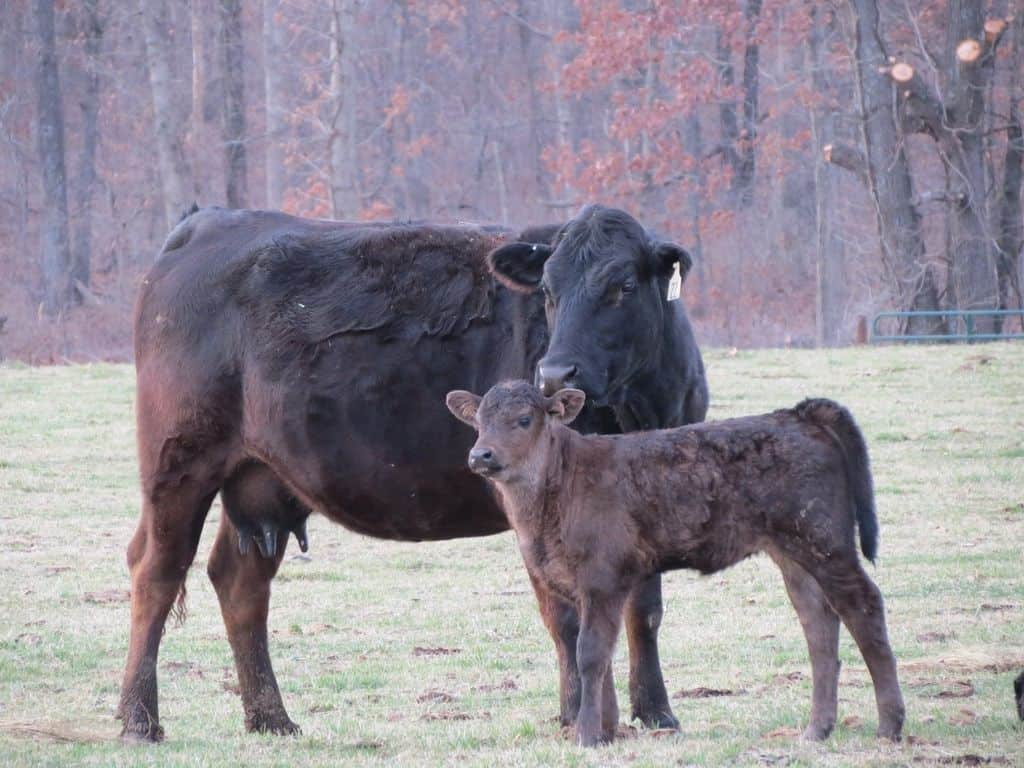
Depending on which region you happen to live in, you’ll find that raising certain cattle breeds over others is a lot easier and more cost-effective.
Luckily, this isn’t a problem when it comes to the Gelbvieh cow breed, as it can easily survive in most climates with ease.
It is especially proficient around warmer areas though, as it can survive both the heat and the insects that come with it.
In fact, in most cases the Gelbvieh cow breed has been more than capable of withstanding both sides of the spectrum, so even if you happen to be living in a place where the winters are very cold and there is very little forage for the cattle to chow down on, they’ll still survive all the same.
As far as the general health concerns go, let’s just say that there isn’t anything that you should worry about with the Gelbvieh cow breed that you shouldn’t also worry about for most any other breed.
At the end of the day, owning a cow or a cattle farm is really just a gamble for anyone out there, as your cows can easily catch a disease and they can all be wiped out or they can all go on their whole lives without a care in the world.
So, is the Gelbvieh a generally hardy breed that doesn’t need to worry about much throughout its lifetime? Yes. Can it also catch on multiple diseases and die prematurely? Absolutely.
Conclusion
The Gelbvieh cow breed is definitely a unique one, as even though it lost a lot of its popularity over the years with farmers, it’s gained a lot of attention because of its unique traits which can be passed on easily through cross-breeding.
So, while we can’t say for sure whether investing your whole fortune in these cows is more worth it than for any other breed, what we can say is that if you play your cards right we don’t see why you would regret your choice either.






